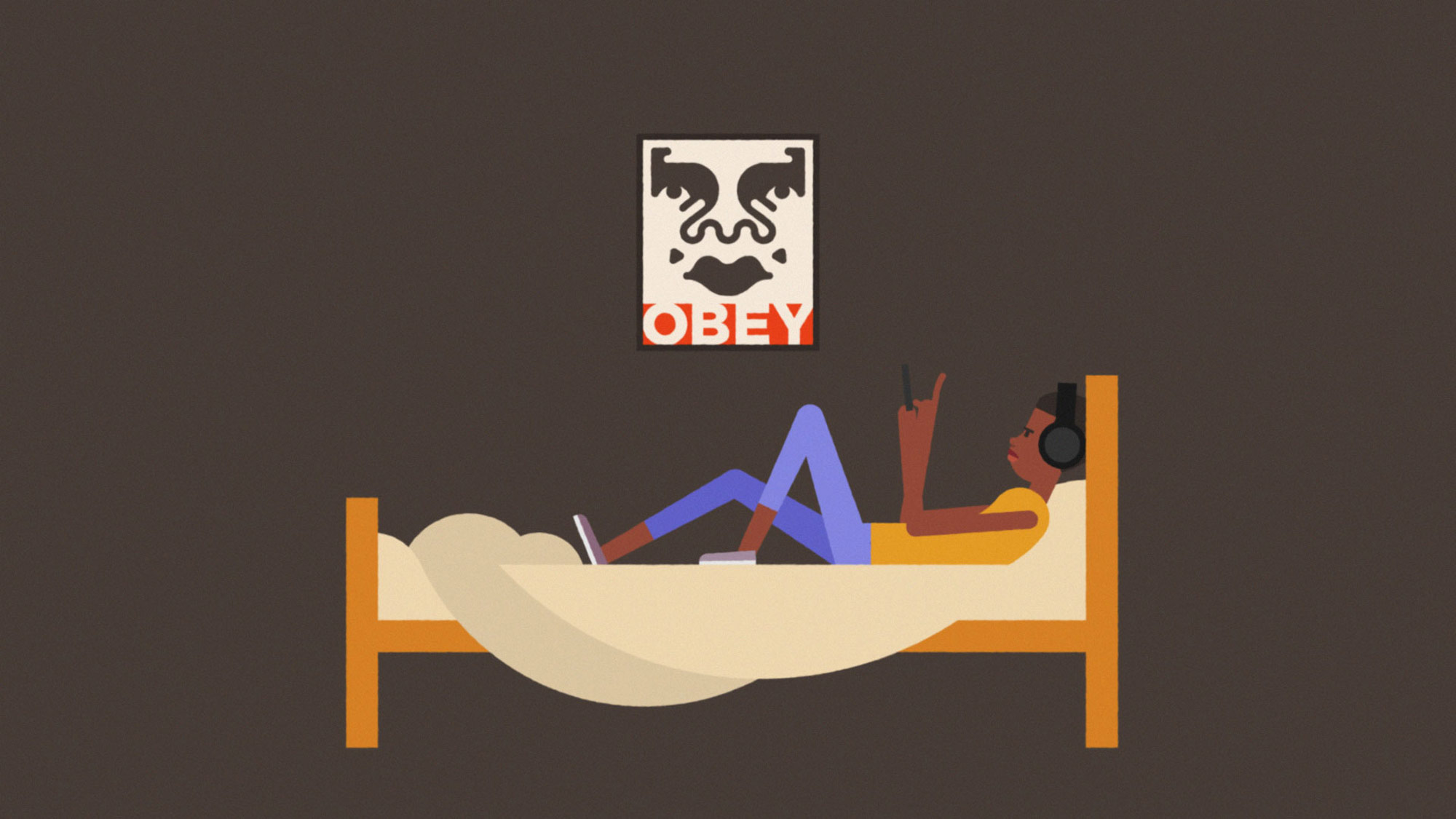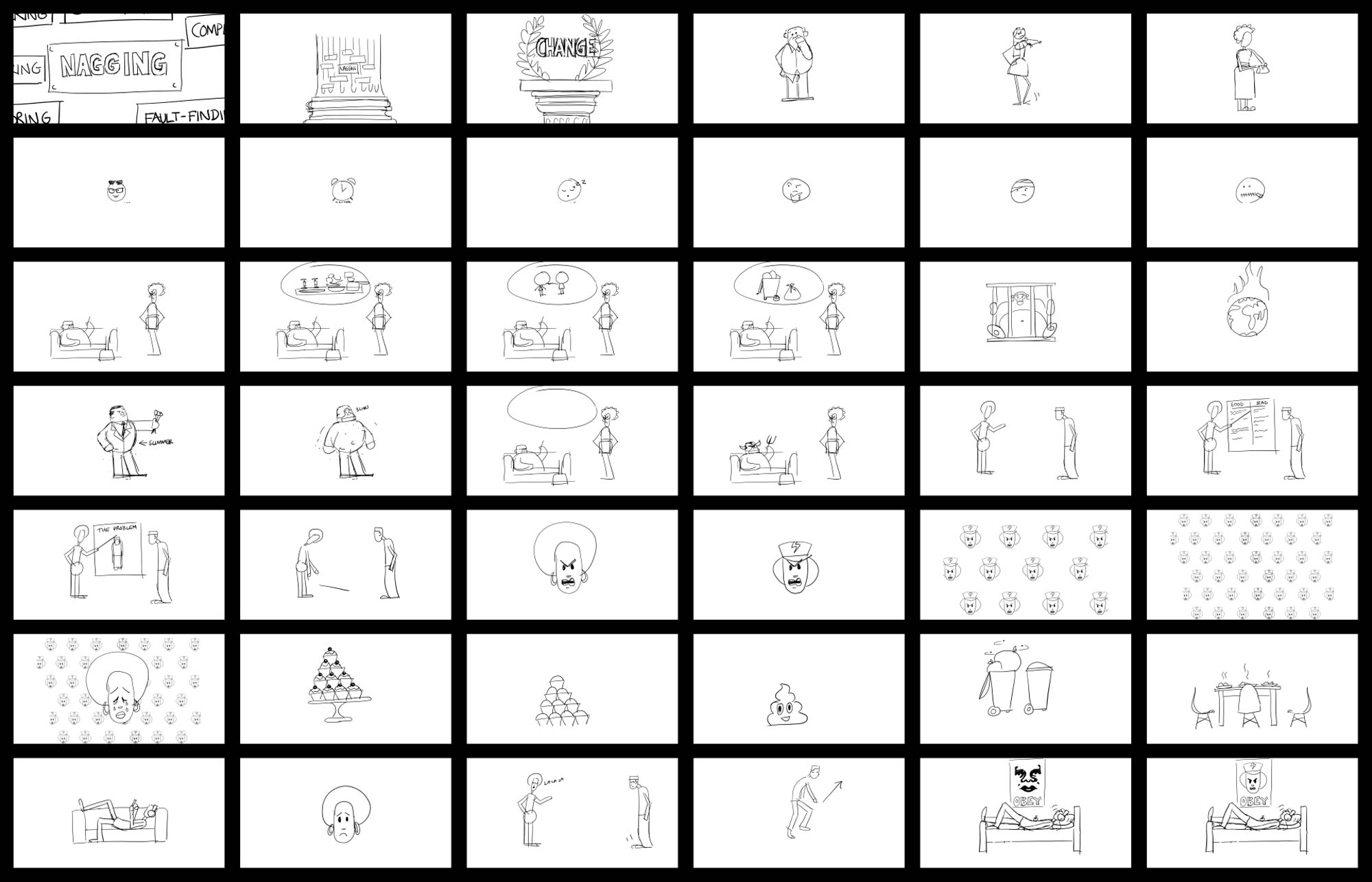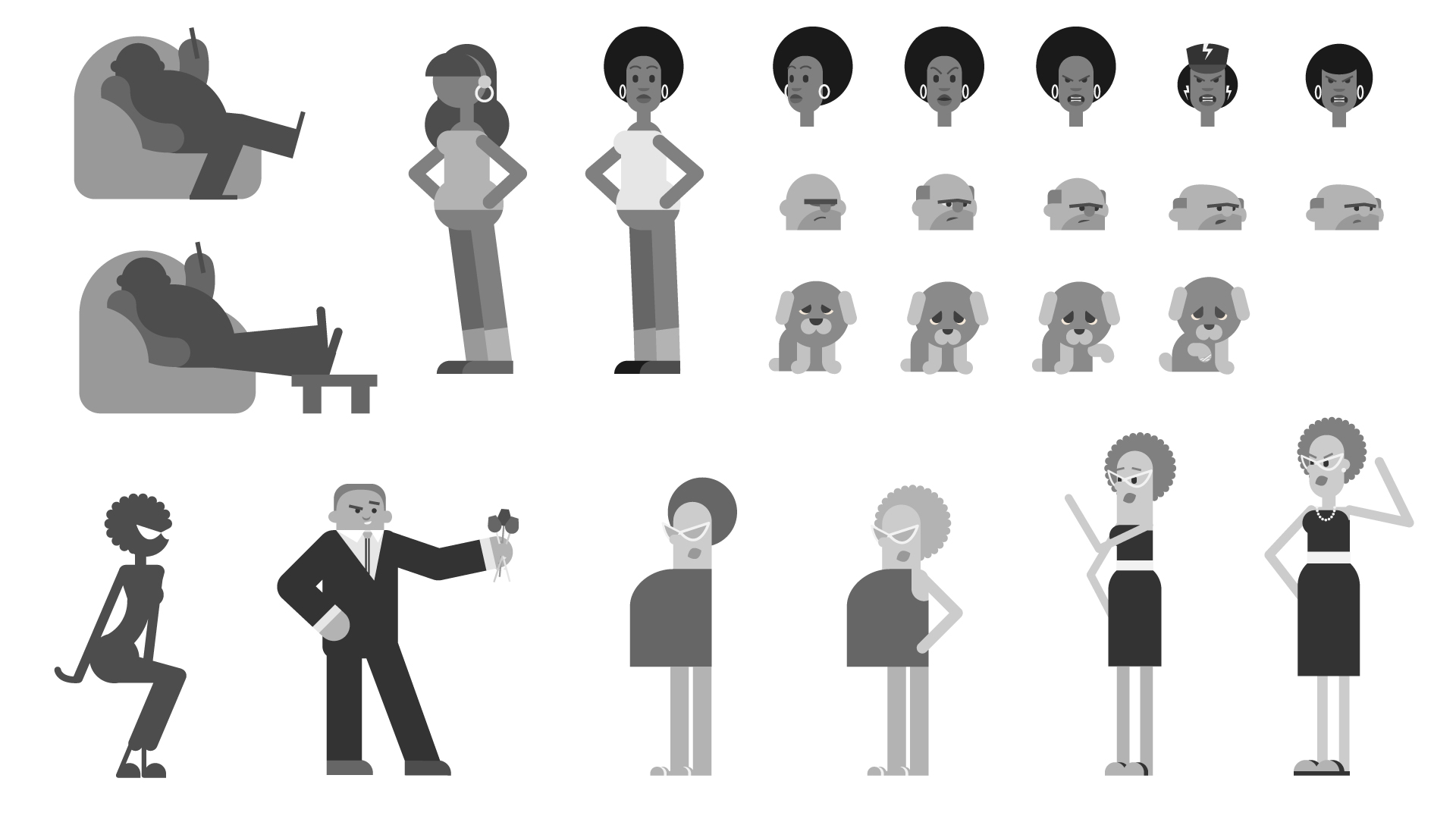
Do you ever wonder why no matter how much you push, prod, remind or berate those close to you – largely for their own good mind – it seems as if your words are falling on deaf ears? Well perhaps it’s the approach, not the message which is preventing your words from having their desired effect. Fear not, help is a mere click away in the form of Steve Kirby’s instructive animation How to Stop Nagging and Start Teaching, created for The School of Life’s ongoing series of video advice. We invited Steve to give us the lowdown on how establishing self-imposed constraints enabled him to manage the workload challenges of this solo commission.
School of Life commissions can be great opportunities to showcase your talent because they offer a lot of creative freedom both in terms of style and content. On the other hand, four minutes is a lot of work in what is a relatively short space of time for a solo artist. I’ve known other animators put their own money into loss-leader films with commissions like this, but I wasn’t really in a position to do so at this point. Instead, I figured I would enjoy the resource-management challenge of going it (more or less) alone.

The visual direction was all about reduction. School of Life stipulated characters with racially diverse skin tones, and a simplified palette grew out of this proviso – that’s why there are a lot of brown and peach colours in the film. Almost all the design is based on straight lines and circles. For me, self-imposed constraints like that can help maintain consistency of form and provoke more inventive solutions to design questions.
Four minutes is a lot of work in what is a relatively short space of time for a solo artist.




I spent a couple of days thumbnailing ideas and a rough storyboard, about a week designing assets in Illustrator, almost a day to rig and test each character, and about three weeks animating. Good character animation is labour-intensive, so I decided to keep backgrounds and compositing to an absolute minimum so I could concentrate on movement and timing. I animated on 2’s, and bought a few cheap laughs here and there with emojis.



Andrew Embury provided a little piece of standalone animation and, more importantly, a different pair of eyes on the character animation. I had recently finished work with Wes Slover of Sonosanctus on a personal project, and he kindly hooked me up with his assistant Trevor Richardson who did a great job on the sound. Trevor was really receptive to my ideas and brought some lovely touches of his own.
SoL didn’t see a frame until the film was complete, which is obviously unusual. Fortunately, everyone there loved it.


